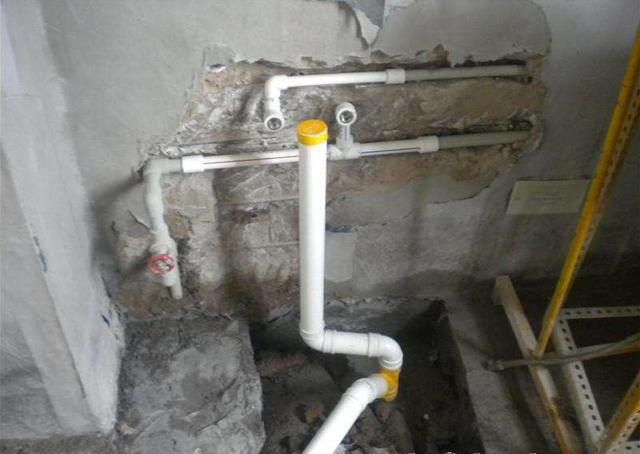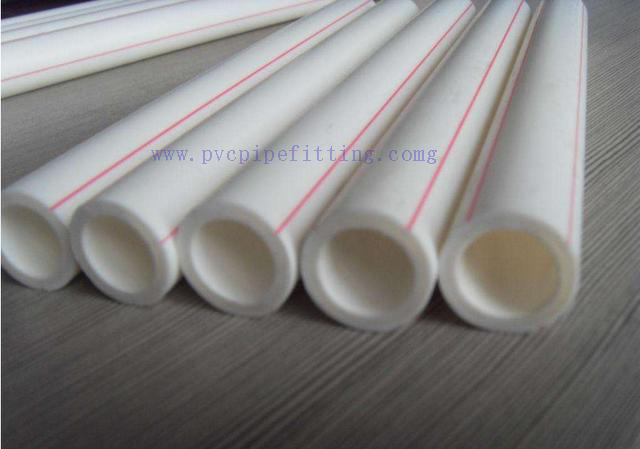How to distinguish the quality of PPR Pipe and fitting?
When we choose the PPR pipe and fitting, it is only about the thickness of the pipe wall. But for the good PPR pipe, sometimes the pipe wall is thicker and the quality is guaranteed. The metal interlayer or the special interlayer inside can’t be seen by your eyes, but the waterway is buried under the ground. If something goes wrong, it will be very troublesome, for example:
If the quality of PPR pipes is guaranteed, they can be used for more than 50 years, but if they are not good, the rupture of pipes will be very troublesome. But in the face of so many materials, how to distinguish the quality of PPR tube?
I. “Look” Appearance
Color, good PP-R pipe color is soft and uniform, without any color. (PP-R pipes are mainly white, grey, purple, green, yellow, blue and so on. Consumers often think that white is the best PPR pipes. In fact, color is not the standard to judge the quality of PP-R pipes. In fact, the quality of PP-R pipes has nothing to do with the color of PP-R pipes. Plastic particles are mainly white, transparent (and other colors have been added) as long as the color masterbatch can be produced, the color masterbatch will not be decomposed and will not change the quality of PP-R, so it does not matter what color the water pipe is, according to the national regulations, PP-R water pipe should have good light-closing performance, in this regard, gray or other opaque properties will be better. But this advantage only exists in open pipe installation and pipeline wells, and all domestic pipes are buried, so there is no saying that gray is superior to other colors at all. PP-R tube is completely opaque, and pseudo-PP-R tube is slightly or semi-transparent. White products can only be produced with pure PP-R raw materials. For example, the products produced with recycled materials, waste materials and corners have soft and uneven color. Adding recycled materials, waste materials and corners to other color products processed with masterbatches will not affect the color of products. This is why many home decoration retail products are mainly white; the inner and outer surfaces of products should be smooth and flat, and no defects such as bubbles, obvious depressions, grooves and impurities should be allowed.
2. “Touch” Texture
Good PP-R pipes are 100% pure PP-R raw materials (without any additives), smooth surface, soft handle, and smooth handle of pseudo-PP-R pipes. Generally speaking, rough particles are likely to be mixed with impurities.
3. Smell
The main material of PP-R pipe is polypropylene, good pipe has no odor, bad pipe has strange odor, probably mixed with polyethylene, not polypropylene;
4. Kneading Hardness
PP-R pipe has considerable hardness and can be pinched easily. It is definitely not a PP-R pipe.
5. “Quantity” Wall Thickness
In addition, vernier calipers can be used to measure whether the pipe wall thickness is up to the standard and uniform. Generally, good pipe is produced strictly according to the national standard, but this method requires a certain understanding of the national standard of PP-R pipe.
6. listen to the voice
The sound of PP-R pipe landing is dull, while the sound of pseudo-PP-R pipe landing is clear and crisp.
7, “smash” elasticity
Good PP-R pipe, good resilience, easy to smash naturally is not good PP-R pipe, but the temperature below 10 degrees, the best PP-R pipe can also smash. But the hardness is not equal to good elasticity, some manufacturers add too much calcium carbonate and other impurities to improve the hardness, how can not break down, easy to crack after a long time; (Because the cold brittleness of PP-R raw materials in several temperature range performance is different: 10, -5, -23…)
8. Smell of Burning Smoke
PP-R pipes mixed with recycled plastics and other impurities emit black smoke and a pungent odor. The good material will not emit black smoke and odorless after burning. After burning, the melted liquid is still very clean. (You can also “pull” to see how long it is pulled.)
9. Melting
The normal welding temperature of PP-R pipeline is in the range of 260-290 C. The welding quality will be better guaranteed during the welding in this temperature range. If the welding parameters are normal, the product can easily enter the welding die, and the melting accumulation tumors are close to the liquid state, which indicates that the product is not produced by the authentic PP-R raw material, and if the melting accumulation tumors can rapidly cool down and change. Hard (usually within 10 seconds) can also indicate that the product is not authentic PP-R raw material production, because one of the characteristics of PP-R is better insulation effect, its cooling rate will naturally be slower.
Take care of whether the inner diameter of the pipe is deformed, whether the pipe fittings are drawn, good PP-R pipe can not be drawn, and the inner diameter is not easy to deform.
10. “Inspection”
The test instrument is used to distinguish the good and bad of the product. Several important test data are stipulated in the national standard, such as aging resistance test of pipes (keeping 8760 hours of non-failure test at annular stress of 1.9 MPa and test temperature of 110 C), stability test of piping system (5000 cold and hot cycles) and impact resistance test, etc. Therefore, users can request manufacturers or businesses to provide the above test reports for verification when they choose to use them. 。 In addition, an important requirement of the national standard for raw materials used in pipes and fittings is the melting index, which can not exceed 30% before and after processing, and there is also a requirement in the industry that the melting index of raw materials should not exceed 0.5g/10min.
For more information, please browse https://www.pvcpipefitting.com/


没有评论:
发表评论